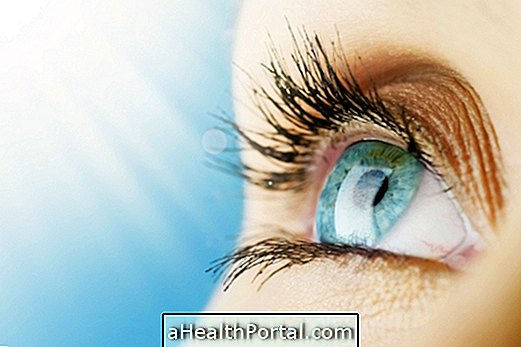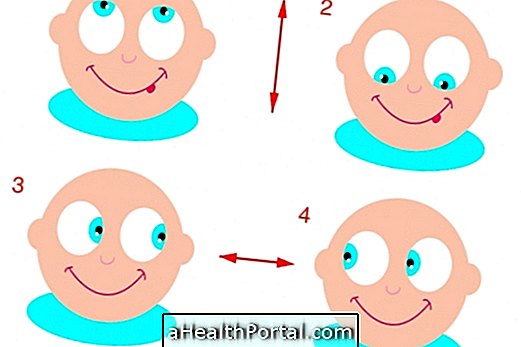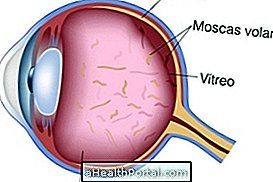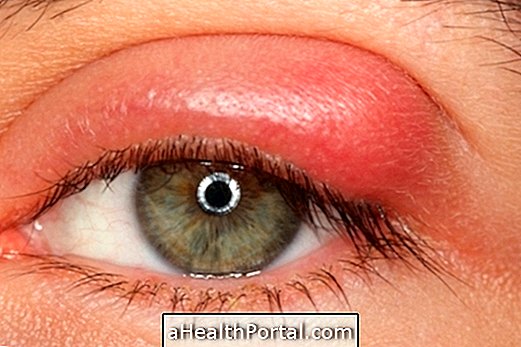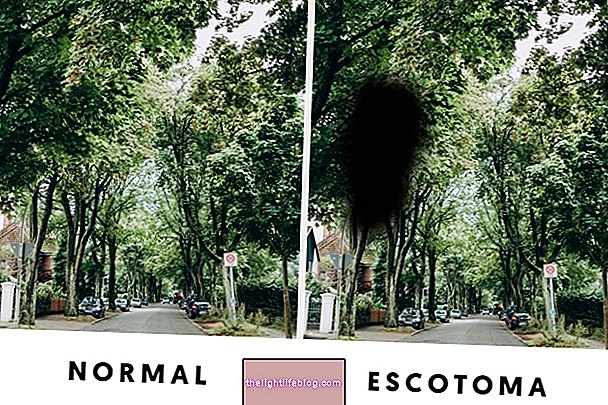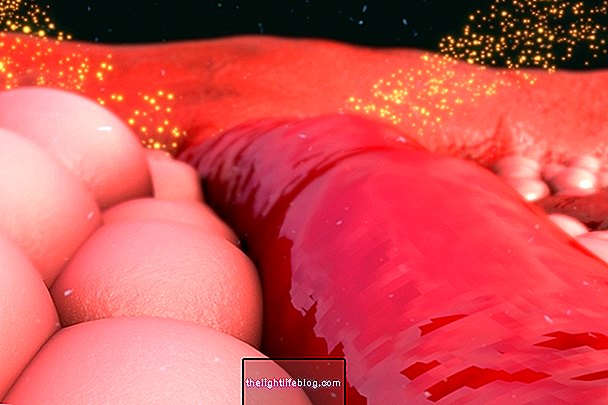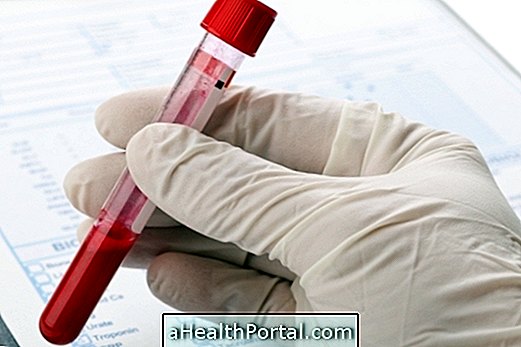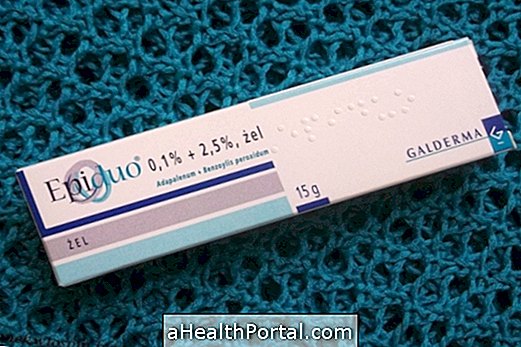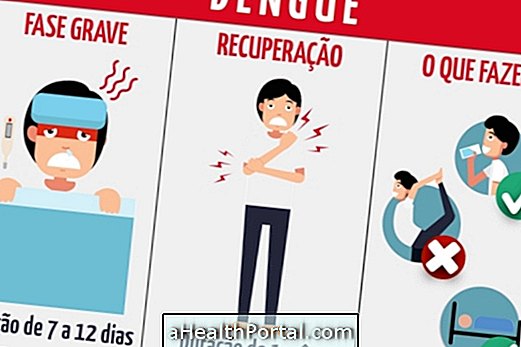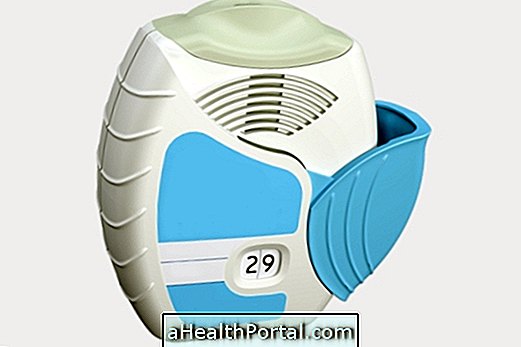The red spot on the eye can be caused by a variety of causes, such as irritation after a product or foreign body falls, a scratch, an allergic reaction or even an eye disease, such as episcleritis, for example.
However, a very important cause of this alteration in the eye is the subconjunctival hemorrhage, known as effusion, when a blood vessel ruptures due to some effort, sneezing, coughing or scratching or a blow to the site.
To identify the cause of the red spot on the eye, it is necessary to seek care from the ophthalmologist, who will do the evaluation, and indicate the best treatment for each case.
See also what can cause burning in the eye.
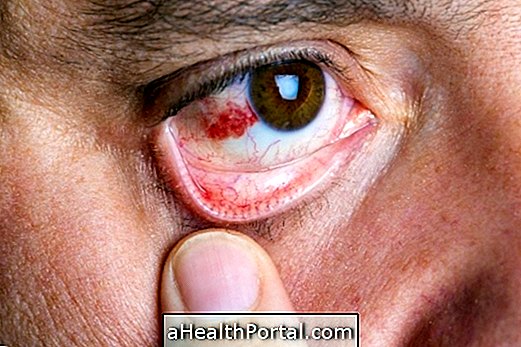
1. Scratch in the eye
The eye may become irritated by a scratch, such as by scratching hard or falling a foreign body, such as a speck in the eye. This is because the membrane lining the eyes, called the conjunctiva, is fragile and contains blood vessels that can break easily.
- What to do : To relieve eye irritation, it is recommended to make compresses of cold water, and use lubricating eye drops. However, in case of severe pain that does not improve, or if the stain grows, it is recommended to go to the ophthalmologist so that it evaluates the depth of the lesion.
2. Allergic reaction
Allergic reactions due to contact with dust, dust mites, mold or chemicals, such as makeup or shampoos, can cause redness in the eyes, which is located at one point or diffuse throughout the eye, causing conjunctivitis.
In addition to the red spot, itching, burning, lacrimation or swollen eyelids also appear, as well as other symptoms such as sneezing and itching of the skin, which may also indicate that it is an allergy.
- What to do : It is recommended to remove or remove the substance causing allergy, wash the eyes with saline solution and use a lubricating or anti-allergic eye drops. If symptoms persist for more than 2 days, consult your ophthalmologist for a better evaluation of the changes. Here are some home remedies to end the allergy in the eyes.
3. Subconjunctival hemorrhage
Also known as hyposphagma or effusion in the eye, this change is caused when a blood vessel from the surface of the eye ruptures, causing a blood stain.
The most common causes of this bleeding are scratching or rubbing the eyes, coughing, making some effort, vomiting or due to some infection or surgery on the eye or eyelid.
- What to do : Most of the time, subconjunctival hemorrhage is not severe, and it disappears spontaneously after a few days. It is recommended to make compresses of cold water in the eye twice a day and use artificial tears to accelerate healing and decrease discomfort. If the lesion does not improve after a few days or causes pain or changes in vision, seek medical advice. See more on how to remove the blood stain from the eye.

4. Episclerite
Episcleritis is inflammation of the layer of the eye that lines the cornea, causing a red spot on the eye, swelling and, in some cases, the appearance of a lump that can move around the episclera layer, called the episcleral lump.
This change is benign and self-limiting, and although its cause is not fully understood, in some cases it may arise in association with autoimmune, rheumatic or infectious diseases such as syphilis, brucellosis or herpes zoster, for example.
- What to do : Episcleritis usually goes away spontaneously after 1 to 2 weeks, and treatment can be done with cold water compresses and artificial tears. The ophthalmologist may also recommend anti-inflammatories, as well as antibiotics, if there is an infection. Understand better what episclerite is and how to treat it.
5. Pterygium
The pterygium is a growth of a membrane over the cornea, made up of fibrous tissue and reddish blood vessels, which can grow slowly and cause symptoms such as discomfort in the eyes, redness and itching. view.
Its onset is related to excess sun exposure, unprotected, although it is also influenced by genetics.
- What to do : The ophthalmologist may indicate the use of eye drops with artificial tears to relieve discomfort, and sun protection with glasses and hats is also important. If it grows too much and disrupts vision, or for cosmetic reasons, surgery may be done to remove the tissue.
Red spot on baby's eye
The baby's eye may suffer from subconjunctival hemorrhage, as he is often making efforts to evacuate, cough, or sneeze, as well as being able to bring his hand to the eyes for scratching. Usually, this is not a concern, and usually goes away within 2 or 3 weeks.
However, if the blood stain in the eye persists, or if the baby has fever, secretion in the eyes or other symptoms, you should seek your pediatrician or ophthalmologist, as it may be some type of infection, such as conjunctivitis.
See in what situations conjunctivitis can be in the baby's eye.
